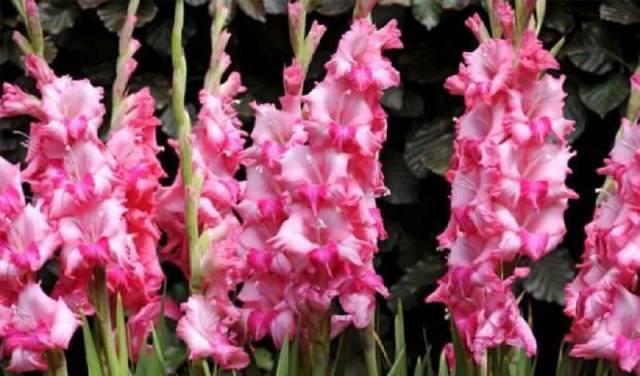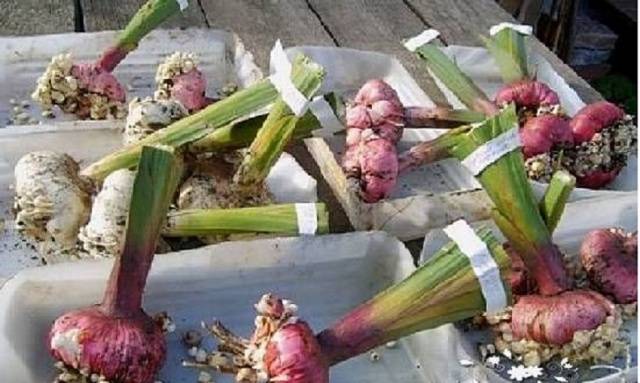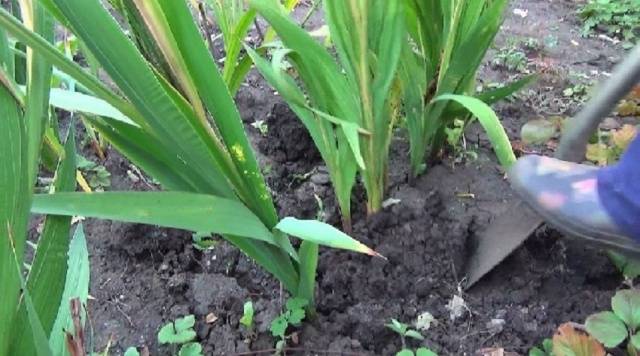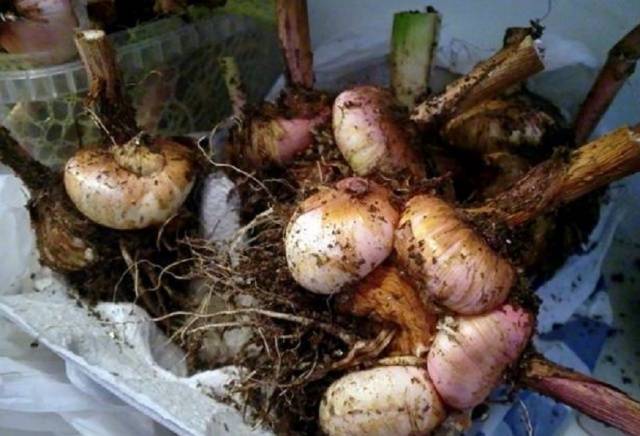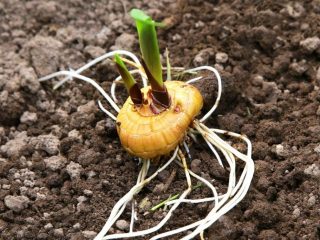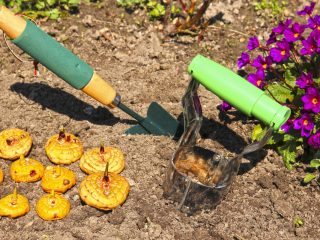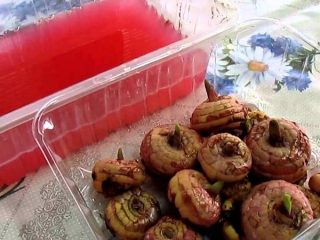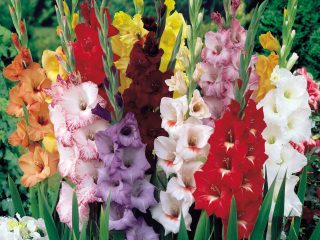Content
Gladioli are luxurious flowers. Gardeners love them for their diversity and splendor. After all, they are able to delight with their flowering for quite a long time, especially if you correctly select early and late flowering varieties.
Gladioli are grown for cutting and for design projects on plots. At the end of the season, summer residents are faced with an important question: how to prepare gladioli for winter? The preservation and reproduction of your favorite flowers depends on the completion of this task. Annual digging, winter storage and spring planting are mandatory activities for the main list of gladioli varieties. Modern breeders always delight summer residents with their new products. Frost-resistant varieties of gladioli are a real gift for gardeners. However, in the northern regions they are also not able to withstand long-term low temperatures. Therefore, they are also dug up after flowering and planted in winter. To be fair, it should be noted that there are very few such hardy varieties: Gladiolus imbricatus and Byzantine (Gladiolus Byzantinus). And all the rest require special attention in winter.
In order for gladioli to survive the winter well, certain measures must be taken.Their further development and flowering depends on how well the storage of gladioli bulbs is organized. After all, you cannot leave the bulbs in the soil; they will die when the temperature drops below zero. How to properly prepare and store gladioli bulbs?
Preparing for winter storage
To ensure that your gladioli enjoy lush flowering and health next year, listen to the advice of experienced flower growers.
Preparation of gladioli for winter begins during the flowering period. During this period, it is important to monitor the timely cutting of flower stalks. They must be cut before seeds form. This factor is the key to good development of the main gladiolus bulb and children. By cutting the flower stalks in time, you will receive double benefits:
- Preserve the decorativeness of the flower bed. Wilted flowers will not spoil its appearance.
- Give the gladioli bulbs the opportunity to accumulate strength for wintering.
When cutting flower stalks for a bouquet, leave the leaves. After the flowering process is over, the formation of the bulb continues for another 50 days. At this time, leaves play an important role. Digging of gladioli begins without waiting for the leaves to turn yellow. After all, the first thing is meeting deadlines. Keeping the bulbs in the ground means allowing fungal infections to develop.
Depending on the region, digging begins in September - early October. The period varies from the end of flowering and the onset of cold weather. For the middle zone, the optimal time is September. In more southern regions, October is optimal. They begin digging gladioli with early varieties, then move on to middle and late ones. The very last to be removed from the ground are the bulbs of young gladioli grown from children.
Digging up the bulbs
The procedure is carried out on a sunny, dry day. Before digging up the bulbs, decide where to store them. Cardboard boxes, rag bags, and small wooden boxes are suitable. Prepare separate containers for different varieties of gladioli so as not to mix them up during storage. Be sure to label the boxes.
Dig up the corms carefully. It is best to use a pitchfork or shovel. Try not to damage the planting material. Bury the shovel or pitchfork into the soil away from the gladiolus, retreating 10 cm from the ground part.
After digging, pull the plant by the leaves, remove it from the ground and shake it lightly.
Immediately cull spoiled or damaged gladioli bulbs. Inspect the lumps of earth. If you find small children, be sure to save them. Trim the remaining stems at a height of 2 cm to 5 cm.
Do not try to leave all the bulbs for “wintering”. Choose the healthiest ones and in the quantities you will need for planting next year. Criteria for selecting planting material:
- No damage or disease.
- Age. Store bulbs no older than 4 years.
- Form. Choose round ones with equal height and diameter (ideally). Send flat ones with a large bottom to the rejects; it is better to leave those grown from children.
- For children, select the largest ones with intact covering scales.
Do each action efficiently and do not rush, so that damaged or diseased gladioli bulbs do not end up in storage.
Primary processing of bulbs before storage
After selection, begin primary processing.
Primary treatment of tubers includes washing and drying of planting material:
- Rinsing with the addition of potassium permanganate to the water allows you to clean the bulbs from contaminants and protect them from diseases. Do not remove the scales and keep them in the solution for at least half an hour (an hour is optimal) or treat them with a disinfectant composition. At this point, carefully examine the quality of the children. Inferior ones float in the solution, and healthy ones sink to the bottom.
- Drying must be done efficiently. If you don't dry the bulbs well, they will rot and you will lose valuable material. At room temperature, this operation takes about two months. It is recommended to keep the bulbs at a temperature of +28°C for the first week, then reduce it to 18°C for a month.
The next preparatory step is to clean the adult bulbs from plant debris.
Winter storage technology
After processing and cleaning, the planting material is sent for storage until the next season. There are several installation options:
- In cardboard boxes. Arrange the bulbs in one layer so that they do not touch. First make several holes in the box for easy ventilation. Drawers with ready-made holes are a great alternative to boxes. Experienced gardeners advise wrapping the bulbs in newsprint.
- In vegetable nets. Ordinary nets for vegetables and fruits from a store chain will come in handy. Summer residents stock up on nets in advance during the summer season, and then place gladioli bulbs in them.
- In paper bags. This option is chosen for storing children.Due to their small size, they may fall out of boxes or nets. The bags are periodically ventilated so that children get access to air.
There are some nuances when choosing storage containers. They must be able to ventilate. Plastic bags or plastic containers without holes are not suitable for this purpose. The gladioli bulbs in them will quickly begin to rot.
Wood ash can be an excellent substitute for garlic; you just sprinkle it on the onions.
The temperature during winter storage is maintained within the range from +3°C to +8°C. Air humidity – 80%. In order to ensure the required performance, the boxes are placed in the basement or refrigerator (on the bottom shelf in the door). The bulkhead is done monthly. The bulbs are carefully inspected and dried if necessary.
As soon as the bulbs end their dormant period, it is necessary to change the storage conditions. This happens in the middle of winter. If you miss the moment, the gladioli will begin to sprout.
The boxes are moved to another place where they can be provided with diffused sunlight. Direct sunlight at this time is harmful to the bulbs.
A few tips for gladioli lovers
- Store different varieties separately and be sure to label each box. This will make it possible when planting not to confuse the types of gladioli.
- Try to provide the bulbs with a ventilated room for winter storage. If this is not possible, regularly ventilate the planting material.
- If moisture appears on the bulbs, dry them; if they are dry, soak them before planting.
- If you find pests, be sure to treat with Inta-Vir or another product, then dry and store again.
From all of the above, it should be concluded that it is necessary to inspect the bulbs regularly and carefully during winter. In this case, you will save gladioli planting material until spring with minimal losses. The requirements for winter storage conditions for gladioli are not at all difficult for experienced gardeners. And for beginners, you need to carefully follow all the recommendations, and your favorite varieties will delight you with their flowering every year.
